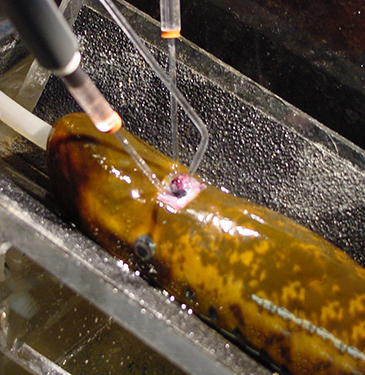Sea Lamprey Research
Purpose of Program
Generate and make accessible a portfolio of science to further the integrated control of sea lampreys, including the development of novel, effective strategies.
Program Scope

The Sea Lamprey Research Program consists of a portfolio of funded basic (discovery, descriptive, or hypothesis generation) and applied (descriptive or hypothesis-driven) research organized by theme areas given below. Projects are solicited from the Great Lakes research community and a competitive, peer-reviewed process, led by the Sea Lamprey Research Board (SLRB), ensures a high-quality program of science.
Theme Areas
Research theme areas describe important topics related to the control of sea lampreys in the Great Lakes and are led by the SLRB. The SLRB is also developing synthesis papers that describe research needs for sea lamprey control in various disciplines (e.g., genetics, physiology). The SLRB encourages cross-cutting proposals that integrate two or more research concepts as described in the synthesis papers below. Examples of cross-cutting concepts are provided in the program’s conceptual diagram. Investigators are encouraged to use these examples as inspiration to develop research project ideas, but proposals must be submitted under one of the research theme areas below. Investigators are also encouraged to determine and communicate how their proposed project will address Sea Lamprey Control Board research priorities. Projects that do not fall under a current theme area may be supported under "non-theme" research. Investigators with ideas for new theme areas should contact the Science Director (amuir@glfc.org).
Research theme areas
Research synthesis papers
- Behavioral ecology (coming soon)
- Chemosensory communication
- Experimental control methods (coming soon)
- Genetics
- Physiology
- Population ecology
- Toxicology (coming soon)

